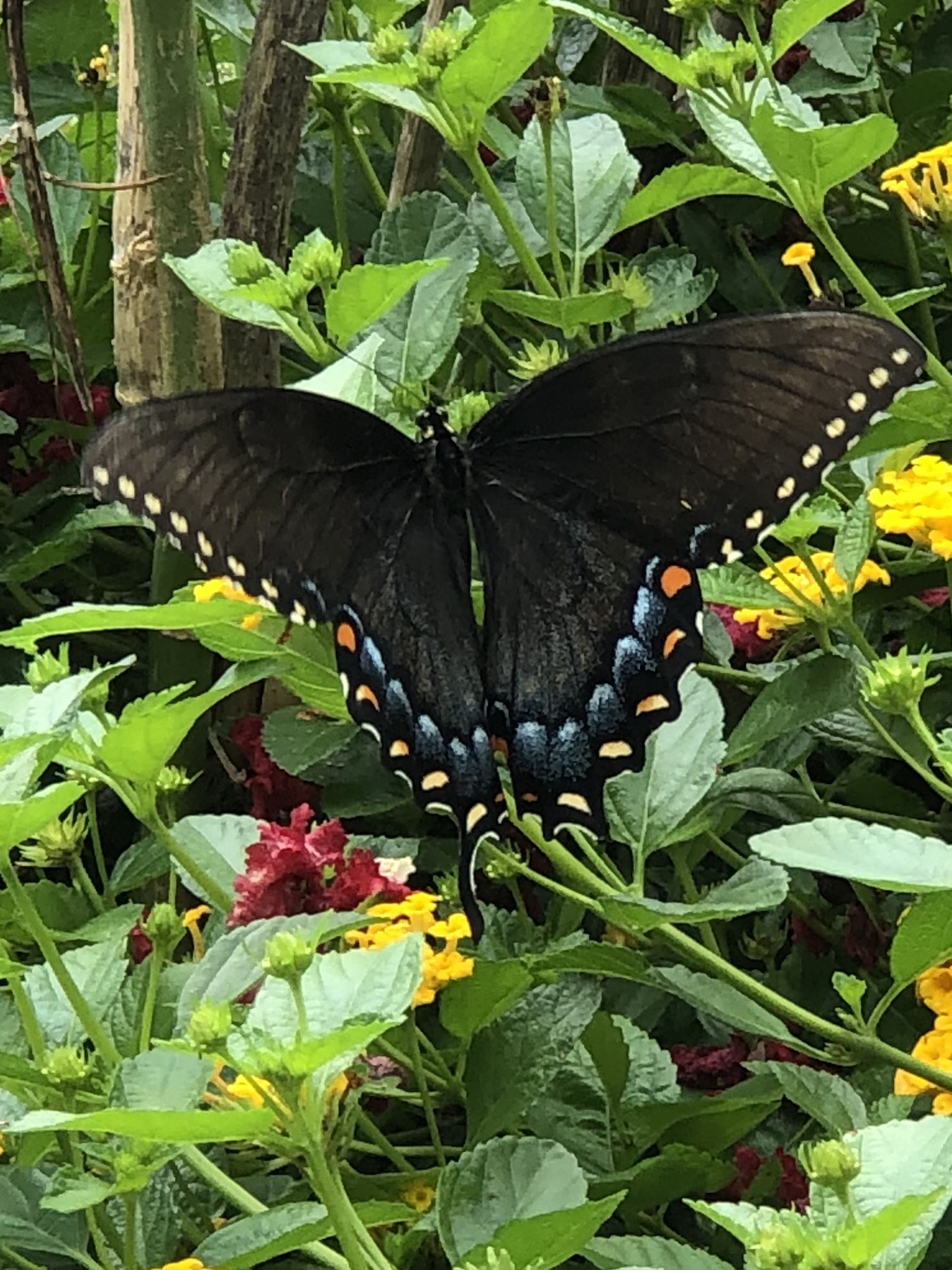 The summer sun has the soil warmed up nicely for all of our heat loving plants. Peppers, eggplants, cucumbers, squash, and beans should all be in the ground now. Tomatoes are likely big enough at this point that they, and other tall plants, would benefit from a cage or stake to support them. Don’t forget to prune suckers from tomato plants, and keep an eye out for hornworms that can destroy your crop.
The summer sun has the soil warmed up nicely for all of our heat loving plants. Peppers, eggplants, cucumbers, squash, and beans should all be in the ground now. Tomatoes are likely big enough at this point that they, and other tall plants, would benefit from a cage or stake to support them. Don’t forget to prune suckers from tomato plants, and keep an eye out for hornworms that can destroy your crop.
Speaking of hornworms, it’s time to keep an eye out for other pests, and the beneficial insects that eat them. Our praying mantises have hatched, and the ladybugs are out in force patrolling for aphids. Spiders, wasps, small snakes and toads all contribute their share to pest control in your garden. While many people dislike these creepy crawlies, they are a necessary part of a healthy ecosystem in your garden. If you do find pests, you can mix a small amount of dishwashing liquid and spray them down. Diatomaceous earth powder works too, but it does not discriminate and will harm the beneficial insects as much as the pests. For snails and slugs traps work very well, and you can make your own by setting out a shallow dish or jar top filled with cheap beer.
 There are also some pests where you’ll have to make a judgement call: Swallowtail caterpillars absolutely love dill and fennel, and can denude a plant in just a few days, but if you kill the caterpillars you won’t have the beautiful butterflies they turn into. Gulf Frilly caterpillars love Passion Flower vines and their voracious appetites can reduce the number of amazing blooms you get, but again: No caterpillars, no butterflies. In our experience, simply having healthy plants is usually enough that the caterpillars can get their fill and the plant can survive just fine.
There are also some pests where you’ll have to make a judgement call: Swallowtail caterpillars absolutely love dill and fennel, and can denude a plant in just a few days, but if you kill the caterpillars you won’t have the beautiful butterflies they turn into. Gulf Frilly caterpillars love Passion Flower vines and their voracious appetites can reduce the number of amazing blooms you get, but again: No caterpillars, no butterflies. In our experience, simply having healthy plants is usually enough that the caterpillars can get their fill and the plant can survive just fine.
The weather lately here in North Texas has brought us an abundance of rain, but anyone who has lived in Texas very long knows that this rarely lasts. As the rains taper off and the heat continues, it will be more and more important to water appropriately. Deep soaking watering is vastly preferable to more frequent shallow watering as it will encourage the growth of strong deep roots. If you are hand watering or using a sprinkler you should water very early morning to minimize evaporation. In the same manner, drip irrigation is even better as it applies water to the soil directly where it is needed. You can cover your drip lines with mulch to further eliminate evaporation of the water.
Speaking of mulch, you can’t really go wrong applying another layer of mulch around your plants. Not only does this help to conserve soil moisture as alluded to above, but it will also suppress weed growth and help stabilize soil temperature. We use organic materials like straw, wood chips, and even shredded leaves as mulch, and place it over a layer of cardboard or newspaper (junk mail works too, just not the glossy stuff.) If you get mulch from a garden center or nursery, you should avoid dyed mulch. Red and black dyed mulch is the most common, but the chemicals in the dyes can have negative effects on your plants. A good 100% hardwood or cypress mulch is what we recommend, and it looks just as good as a fancy dyed mulch.
It’s also time to start harvesting some of your plants! Blackberries, plums, green onions, and asparagus are already starting to ripen. If you grow asparagus, this should be your last harvest of the year and the plant should be allowed to rejuvenate as an ornamental until the next harvest.
June is also the time to plant annual flowers that thrive in the warm weather. Consider colorful options such as cocks comb, marigolds, zinnias, cosmos, petunias, and sunflowers. Most of these plants appreciate full sun. Prepare your annual beds with a good mix of compost, landscapers mix, and top off with mulch.
Remember, specific gardening tasks can vary depending on the microclimate and individual garden conditions within North Texas, and readers to the north or south of Zone 8 will have slightly different timing.
Give us a call at 877-558-1496, or drop us a line and contact us here, to find out how Desiree can help you create a wonderful garden with a budget you can afford.






Excellent information! Thank you!!